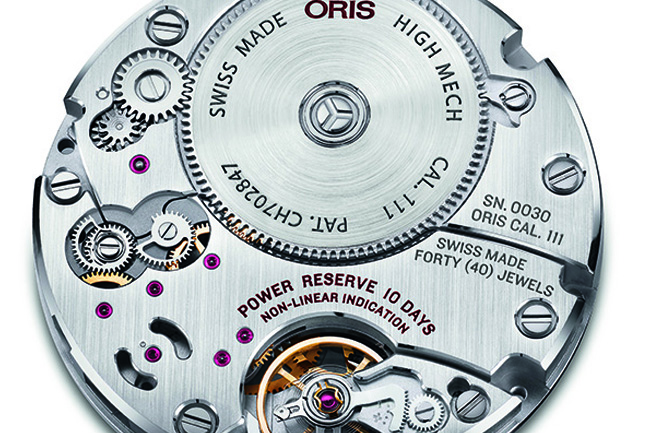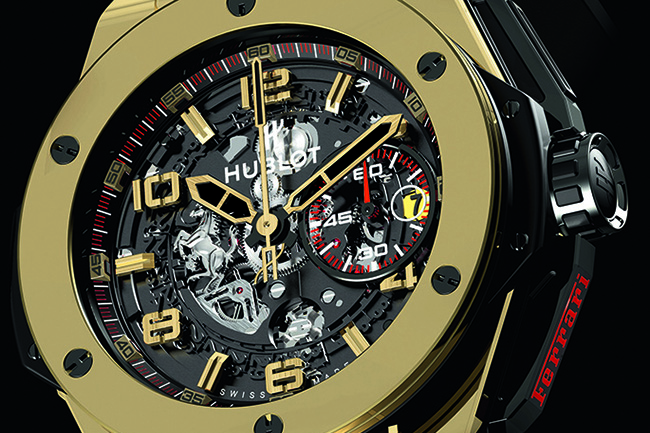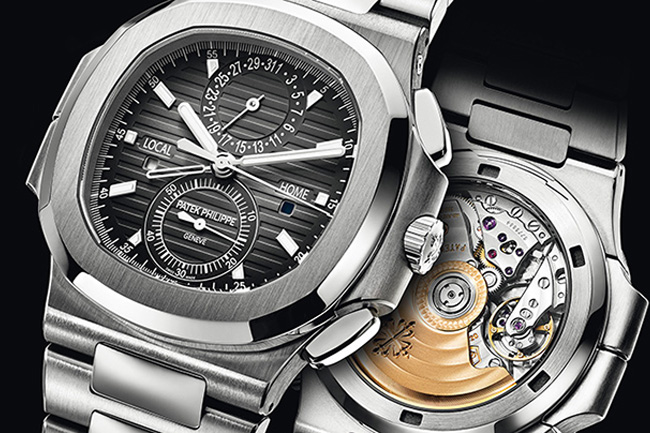
-
A. LANGE & SÖHNE
-
AUDEMARS PIGUET
-
B.R.M
-
BAUME & MERCIER
-
BELL & ROSS
-
BERTOLUCCI
-
BLANCPAIN
-
BOUCHERON
-
BREGUET
-
BREITLING
-
BVLGARI
-
CARL F. BUCHERER
-
CARTIER
-
CHANEL
-
CHAUMET
-
CHOPARD
-
CONCORD
-
CORUM
-
DE GRISOGONO
-
DE BETHUNE
-
DEWITT
-
DIOR
-
DUBEY & SCHALDENBRAND
-
EBEL
-
ETERNA
-
F.P.JOURNE
-
FRANCK MULLER
-
FRED
-
FRÉDÉRIQUE CONSTANT
-
GIRARD-PERREGAUX
-
GLASHÜTTE ORIGINAL
-
GRAHAM LONDON
-
GREUBEL FORSEY
-
GUY ELLIA
-
HAMILTON
-
HARRY WINSTON
-
HERBELIN
-
HERMÈS
-
HUBLOT
-
IWC
-
IKEPOD
-
JAEGER-LECOULTRE
-
JAQUET DROZ
-
JEANRICHARD
-
L.LEROY
-
LONGINES
-
LOUIS ERARD
-
LOUIS MOINET
-
LOUIS VUITTON
-
MB&F
-
MAURICE LACROIX
-
MONTBLANC
-
OMEGA
-
ORIS
-
PANERAI
-
PARMIGIANI FLEURIER
-
PATEK PHILIPPE
-
PEQUIGNET
-
PERRELET
-
PIAGET
-
RADO
-
RAIDILLON
-
RALPH LAUREN
-
RAYMOND WEIL
-
RESERVOIR
-
RICHARD MILLE
-
ROGER DUBUIS
-
ROLEX
-
SEIKO
-
SINN
-
SWATCH
-
TAG HEUER
-
TISSOT
-
TUDOR
-
URWERK
-
VACHERON CONSTANTIN
-
VAN CLEEF & ARPELS
-
VULCAIN
-
ZENITH

Collection watches, iconic models, professional instruments or dress watches… each model serves a specific function while highlighting personal character traits.
MEN’S LUXURY WATCHES
It is often said that a watch is a man’s sole piece of jewelry. It therefore has to be chosen with great care. Each reference exhibits a specific character, which is often a reflection of the person wearing it.
It is often said that a watch is a man’s sole piece of jewelry. It therefore has to be chosen with great care. Each reference exhibits a specific character, which is often a reflection of the person wearing it. Some may find yellow gold too showy while others will consider pink gold too feminine or white gold too bland. Platinum – luxury’s most majestic material – seems overwhelmingly popular among many collectors, for its discretion (it can pass off as stainless steel) and inalterability. But let no one be fooled here, this doesn’t mean a stainless steel watch may not be a luxury watch as well! Much to the contrary, for there are some hosting fine quality manufacture caliber, sometimes even high-flying signature complications.

A WATCH’S PRICE
The price of a watch depends upon a multitude of parameters. Among the most significant ones are: the material, the movement (or caliber) and the rarity. At times, the brand’s renown comes into play, as does the quality of the precious stones, since jewelry watches for men prove quite successful in some countries. The noblest material is unquestionably platinum. Much rarer than gold, it withstands the strains and stresses of daily life without losing any of its initial luster. The runners-up are the three types of gold (yellow, pink and white), which are found in a vast majority of luxury timepieces on the horology market. We ought not to forget Rolex’s Rolesor, a unique gold and steel alloy featured in the Oyster models.
There are groundbreaking materials (such as Hublot’s Magic Gold) which can also impact the watch’s price point, given the time and research work required for the brand to create and perfect them. Likewise, materials chosen for their intrinsic properties (lightness, inalterability, etc.) can influence the price, as is the case for ceramics, titanium, carbon or sapphire. Indeed, a sapphire case Richard Mille watch can fetch up to € 1,800,000! Pricy watches are also often associated with complications. The complexity of the caliber is obviously a determining factor in the price of a timekeeper. Among the small complications are the stopwatch function, power reserve, moon phases, large date, etc.
As far as greater complications are concerned, what comes into play are the tourbillons, minute repeaters and perpetual calendars. As may not be the case in other subjects and areas, accumulation is appreciated by wealthy collectors and the most spectacular horology creations often feature several of these mechanical subtleties as can be seen in the output of the most renowned watchmakers (Patek Philippe, Vacheron Constantin, Cartier, Piaget, Breguet, Girard Perregaux, Jaeger LeCoultre, Audemars Piguet, IWC…)

CHOOSING YOUR WATCH WELL
Choosing a watch is no small matter. Faced with the multitude of models proposed by the leading brands, it is essential to allow for as much time as it shall require. Here, again, several parameters take on a specific significance: style, shape, material, functions and, of course, budget. Well, as long as it’s a Swiss-made beautiful watch… some may say. But shall it be an automatic or manually wound men’s watch? That’s a good question. Purists seem to prefer winding their watch themselves every day. Isn’t it essentially a matter of taste, though?
The decision is also a different one to make depending on whether it’s your first or one of many in a collection. One important aspect to consider is the fact that a watch ought to match its owner’s personality. Indeed, although its main purpose may be to give time, it is also a distinctive element style and reveals a thing or two about its wearer. A Swiss-made gold timepiece and a fine-jewelry watch from the Place Vendôme will not convey the same aura as a titanium sports chronograph, a pilot’s watch or a diver’s watch.
We’ve heard, often enough, the statement: “Should you only have one watch, then it ought to be a Rolex Oyster.” The fact is that today Rolex is by far the world’s leading brand when speaking of luxury watches. Automatic, COSC-certified and still epitomizing reliability, it probably won’t be demoted any time soon. A status confirmed by the French advertising icon Jacques Séguéla, who famously said that “Anyone who doesn’t own a Rolex by the age of 50 hasn’t made a success of their life…” This is only one of many manifestations of a watch’s statutory nature. With a Rolex Oyster, in any case, one thing is certain: one will never be accused of a fashion faux pas. Whether at the cuff of a business suit, a casual weekend outfit or a wetsuit, this watch befits any situation, regardless of the circumstances. All you need to do is choose the one that offers the best match for your personal style. Classical? Then it shall be an Oyster Perpetual Explorer, a Day-Date, a Datejust or a Cellini. Sporty? Then a Sea-Dweller, a Deepsea, a Submariner, a Daytona or a Yacht-master ought to do the trick. The gentleman whose lifestyle is more akin to that of a globe-trotter will lean towards a Sky-Dweller or a GM-Master, the watch the Rolex Manufacture originally created upon a request by Pan-Am pilots.
If your project, however, is to start a collection, then an entire world of wonders and mechanical feats shall open its doors for you. Delve in to discover each brand’s DNA, explore the many available catalogs of their collections, devour the many books published on the subject and take the time to gaze, in display cabinets, at a few iconic models that have left their mark on the history of horology.
Though it entails the risk of forgetting many emblematic ones, we will mention a few of the most famous models: Jaeger LeCoultre’s Reverso, Patek Philippe’s Nautilus, Piaget’s Altiplano, Cartier’s Tank, Blancpain’s Fifty Fathom, Vacheron Constantin’s Patrimony, IWC’s Portuguese, Zenith’s El Primero, Audemars Piguet’s Royal Oak, Omega’s Seamaster, Breguet’s Marine… Make the time to enter the world of fine watchmaking manufactures. It’s pure bliss.


A concise list and description of brands:
Audemars Piguet
Who hasn’t heard of the Royal Oak? Created in 1972 by Gérald Genta, it introduced a new material in the world of luxury by proposing a thin watch whose case was made of steel… at the price of a gold watch. Instant success. This iconic model should not, however, overshadow the manufacture’s other models, which are all remarkable.
Breguet
All that needs to be said is that Abraham-Louis Breguet is the man who invented the Tourbillon. The collections are sublime with models extolling both tradition and modernity.
Cartier
Oft-times nicknamed “the Jeweler to Kings, and king of jewelers”, the House is also the manufacturer of outstanding complications and presents the most beautiful collection of fine-jewelry and mysterious watches. The Ballon Bleu model is one of the world’s best sellers.
Chanel
The J12 and the Première, the two top-selling models of the rue Cambon house designed by the late lamented Jacques Helleu, epitomize the brand: chic, elegant, timeless… effortless.
Dior
The famous Couture house successfully took on a gamble: to make a place for itself in the world of watchmaking. The Dior Inversé reverse caliber, which gives front and center stage to the oscillating weight is a pure stroke of genius.
Omega
The brand worn by James Bond today – the Omega Seamaster – is also the one that walked on the moon on July 21st, 1969 at 02h56m20s UTC.
Oris
Without a doubt one of the best quality/price deals among Swiss-made watches. Especially given the brand’s regular spearheading innovations. Its mechanical altimeter and depth gauge are but two brilliant illustrations thereof.
Patek Philippe
One of the most famous horology manufactures, known and renowned for the quality and complexity of its complication watches. Paradoxically, the brand’s best-seller is a quartz model: the ladies’ Twenty-4 timepiece.
Piaget
This great jeweler is also and above all a fine-watchmaking house. Better yet, it is the undisputed king of the ultra-thin models which, year after year, have been collecting one record after another, both for their calibers and their cases.
Richard Mille
Over the past 15 years, Richard Mille has made a name for his eponymous brand which appeared like a UFO in the world of fine watches. Recognizable at first glance, with their state-of-the-art technological innovations, his complication watches are as pricy as they are sought after. Hats off!
Rolex
The most famous Swiss watchmaking manufacture is also the leader when it comes to the quantities produced each year. The Oyster, the house’s iconic model, embodies most of the company’s innovations.
TAG Heuer
At the end of 2015, the brand, under the leadership of the spirited Jean-Claude Biver, signed quite a ‘coup’ when it launched a connected Tag Heuer able to compete with the Apple Watch. Still, strapped on Steve McQueen’s wrist, the blue dial Monaco shall forever remain an icon.
Tudor
Rolex’ second brand has lived for a long time in the shadow of its big sister. It is no longer the case today and Tudor is establishing itself, with its own DNA – collections extolling fine quality and youthfulness.
Vacheron Constantin
Unquestionably one of the best manufacturers of fine watches in the world – both because of the complexity of the movements and the design of the instruments. In 2015, the house created the world’s most complicated watch: 57 complications resulting from 8 years of relentless work.
Zenith
Zenith stole the collectors’ hearts with its El Primero caliber. Invented in 1969, it was the first automatic chronograph movement beating to the rhythm of 36,000 vibrations per hour, thus displaying the time with a precision of 1/10th of a second.